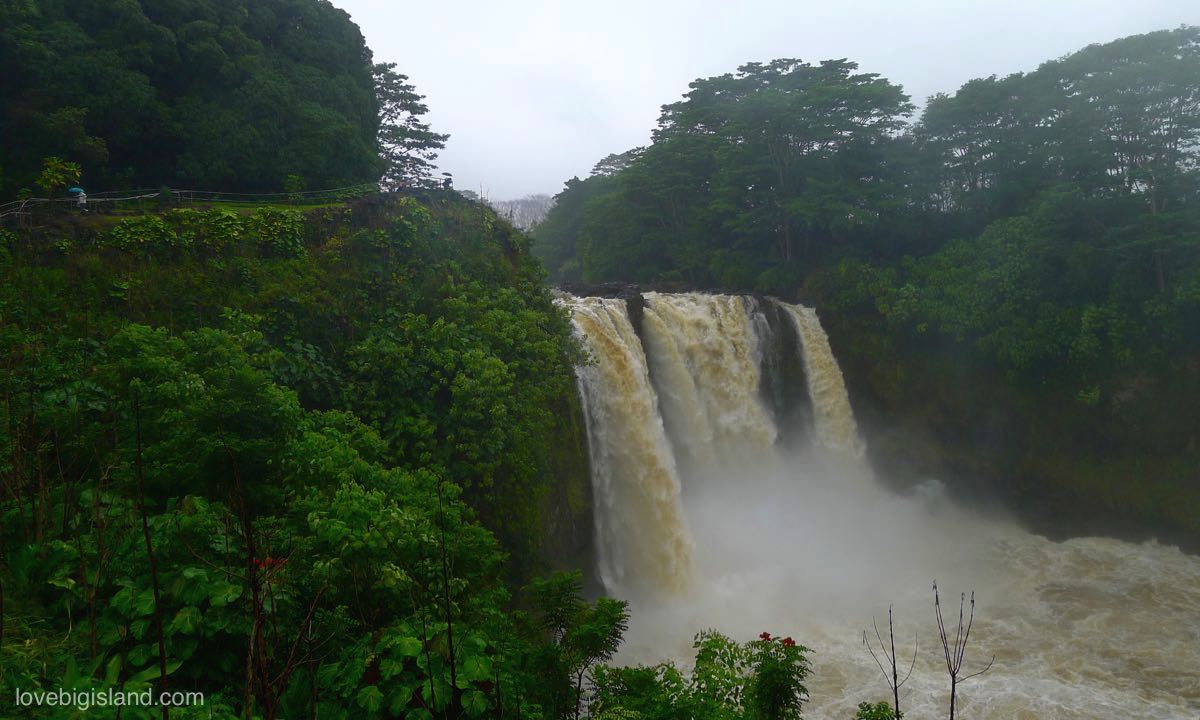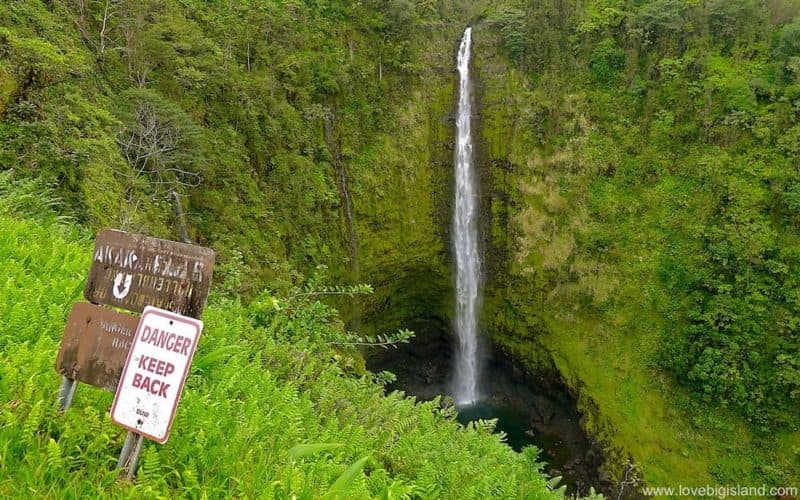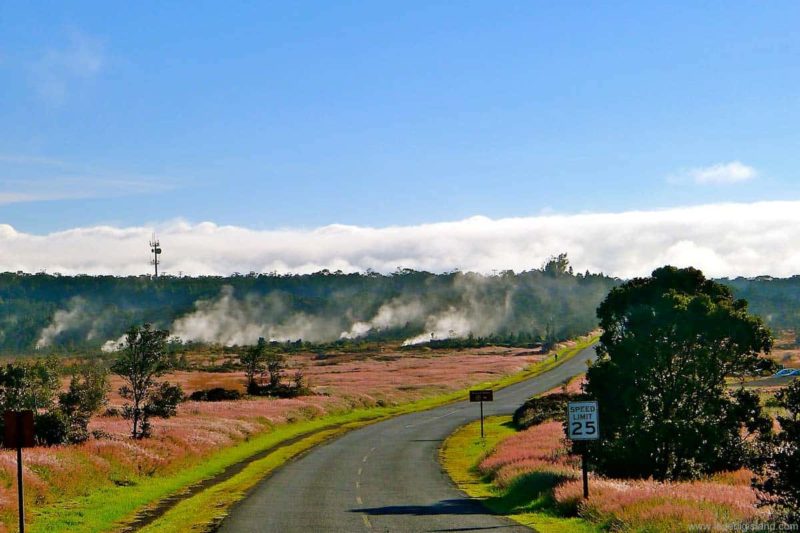You booked your trip to the Big Island several months ago, and now, in the weeks and days leading up to the trip, you see that the forecast calls for rain almost every day you are here.
Is it time to panic? Will your trip be ruined by the rain? Should you cancel and reschedule?
The answer, of course, is no!
Hawaiʻi is a tropical climate, and rain is often in the forecast for many parts of the islands. That doesn’t mean your trip will be washed out. Many storms come and go quickly in the islands, and Hawaiʻi has strong micro-climates, with a wet side and dry side of each island. So if the storm doesn’t pass, those in the know can find a place on the island where the weather might be better.
Table of contents
- Rainy day activities in Kona (for families, beach bums, and adventurers)
- Rainy day activities in Hilo (for families, beach bums, and adventurers)
- Activities to avoid when it’s raining
- How to avoid rain
- Hawaiian weather, explained
Table of Contents
- Rainy day activities in Kona (for families, beach bums, and adventurers)
- Rainy day activities in Hilo (for families, beach bums, and adventurers)
- Activities to avoid when it’s raining
- How to avoid rain
- Hawaiian weather, explained
Drive over to the Kona side for the day and experience one of the beaches on the Kohala Coast.
Take a surf lesson in the rain.
Visit the Kona Seahorse Farm, the Kanaloa Octopus farm, or take the plunge on the Atlantis submarine.
Visit a waterfall, check out a museum, or have lunch in downtown Hilo.
Peruse the many shops and restaurants in downtown Kailua-Kona.
In this article, we help you better understand the weather on the Big Island, and answer some of the key questions surrounding rain in the islands. We also provide some rainy day activities in Hilo and Kona.
8 Things to do in Kona when it rains
Here are our suggestions for a rainy day in Kona:
Family activities
- Kona Seahorse Farm: This incubator “farm” is home to baby seahorses as well as “leafy dragons.” Tours are led by naturalists and include the chance to hold a baby seahorse. Read more about the Ocean Rider Seahorse Farm tour.
- Kanaloa Octopus Farm: Similar to the seahorse experience, except with octopus! A very unique experience for families on a rainy day, just a 15-minute drive from Kailua-Kona (note, tours are currently unavailable due to an impending move).
- Hit the Beach: The beach in front of the King Kamehameha Hotel is a well-protected cove that usually stays calm in light rain. Indulge the kids and go for a family swim, even if it’s raining.
- Kona Coffee Farm Tour: Consistent rain is what makes Kona coffee some of the world’s best! Grab some light rain jackets and head for a farm tour in the Kona Coffee District to learn more about this world-renown growing region and “warm up” with some samples.
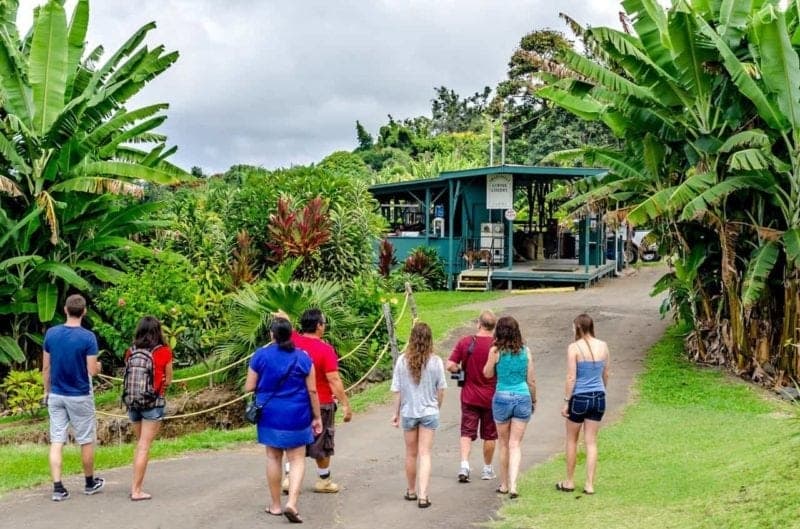
Visitors take a Kona Coffee Farm Tour at the Greenwell farm. Source: here by user horspowr1001 under a CC BY-NC 2.0 licence
Activities for Beach Bums
- Huliheʻe Palace: Take a walk back in time and imagine what it was like to be part of the Royal Court in Ancient Hawaiʻi. The Huliheʻe Palace in downtown Kailua-Kona was once a vacation home for the aliʻi, or ruling class. Tours are available most days.
- Shops and Restaurants in Kailua-Kona: Bop around town and visit one of the many shops or restaurants with oceanfront views, a nice way to enjoy a rainy, relaxing afternoon (perhaps with a drink and a book?).
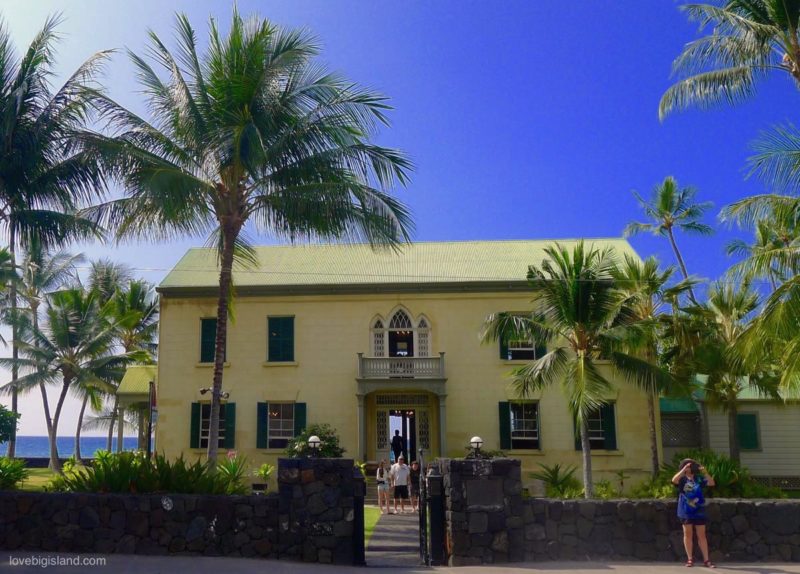
The Huliheʻe Palace in Kailua-Kona is a former vacation home of Hawaiian royalty that now is converted to a museum showcasing furniture and artifacts.
Activities for Adventurers
- Atlantis Submarine: Raining on the surface? Experience a ride on a submarine and head down 100 feet into the ocean to take a look at underwater reefs. Great for families as well as adventurers.
- Surfing: Light rain is an excellent time to take a surf lesson! Book a group or private lesson from one of the surf companies in town and do as the locals do.
7 Things to Do in Hilo when it rains
Here are our suggestions for a rainy day in Hilo:
Family activities
- Museums: Learn about the history of tsunamis in Hawaiʻi and how future ones could effect the islands at the Pacific Tsunami Museum; learn about the missionaries at the Lyman Museum; the Mokupāpapa Discovery Center has exhibits about Hawaiʻi’s marine life and natural history; and the ʻImiloa Astronomy Center for its kid-friendly planetarium. See all Big Island museums.
- Shops and Restaurants in Downtown Hilo: Peruse the many shops and restaurants of downtown Hilo to get a break from the rain; buy the kids a shave ice!
- Visit Waterfalls: A little rain doesn’t stop the waterfalls; in fact, it only makes them more impressive! Don a light rain jacket and visit nearby Rainbow Falls or ʻAkaka Falls – two beautiful waterfalls that allow you to explore without getting too far from the car. Check out our favorite waterfalls on the Hilo side here.
Activities for Beach Bums
- Lunch at Hilo Bay Cafe: This Hilo hotspot is often full at night, but it’s more accessible for lunch, and a great place to find yourself on a rainy day thanks to its incredible views of the bay. If you can’t be on a beach, you might as well sit and look out over the water while enjoying a meal at one of Hilo’s best restaurants.
- Day Trip to Kona: Staying in Hilo but looking for better weather? Drive the Saddle Road over to the Kona side, where it’s much drier. There, you may find a sunny beach even on a rainy day in Hilo. Have a look at our list of things to do on the Kona coast.
Activities for Adventurers
- Hawaiʻi Volcanoes National Park: The national park is great for any kind of traveler, but especially adventurers. When it’s raining in Hilo, it might be raining at the national park, and might not. Even if it is, some light rain gear will allow you to explore the outdoors, and the rain will cause more steam to rise from the volcano. You can check out the Park’s calendar to see about ranger-led programs and indoor activities.
- Queen Liliʻuokalani Gardens: Rain is a common sight in Hilo, so don’t be afraid to don a light rain jacket and take a walk. These gardens provide beautiful views of Hilo Bay and a tranquil, tropical atmosphere with tall banyan trees.
How to Avoid Rain on Your Trip to the Big Island
Many locals enjoy the rain that falls upon Hawaiʻi. After all, the rain is what makes these islands tropical, providing a break from the hot sun and nourishing the lush, green foliage. Rain is at the heart of the rainforest.
Of course, we understand if you don’t see it that way as a visitor. You only have a certain number of days, and many types of travelers, such as beach bums, hikers, and snorkelers, benefit from a lack of rain.
So, if you’re looking to avoid rain, here’s what we suggest:
- Stay in Kona, Not Hilo. Hilo is the wet side (150 inches of rain per year), Kona is the dry side (30 inches).
- Target beaches on the west side of the island. You might be tempted by the black sand beaches of the Big Island’s east coast, but the most sunny days are recorded at beaches on the west side.
Activities to Avoid When It’s Raining
There are plenty of activities to keep you busy on a rainy day. However, there are some that require more caution.
Remember, not all rain is created equal. There’s rain, and then there’s rain. You may be fine to go swimming or hiking or surfing in light rain, for example, but heavy rain and stormy conditions can make things more dangerous.
During heavy rain, we advise adhering to the following:
- Do not go under waterfalls. Heavy rains can increase the force of waterfalls, making them dangerous to swim under.
- Avoid hikes on ridges or near streams. Flash floods are common in the islands, so you’ll want to steer clear of streams during heavy periods of rain. Ridge hikes can also become dangerous due to slippery conditions and steep dropoffs.
- Evaluate water quality. Heavy rain produces significant runoff in coastal areas. Avoid murky or dark-colored water during or immediately following a storm, especially if you have open cuts. When in doubt about water quality, ask a lifeguard and/or check the brown water advisories here.
- Evaluate ocean conditions before swimming. In addition to water quality, be sure to assess the overall ocean conditions. Swimming or snorkeling during a light rain with calm conditions is perfectly fine; doing so during a bigger storm swell could be dangerous. When it doubt, ask a lifeguard.
Hawaiʻi Weather, Explained
(below follows an excerpt from our thorough explainer on Big Island weather)
The Hawaiian Islands have two seasons: The rainy season from November to April, and the dry season from May to October. These dates are general, and flexible, depending on the year. For example, one year might see more rain in May than the next. But, generally, the seasons range across these months.
Now, this doesn’t mean that it rains every day during the rainy season and is dry every day during the dry season. You can still experience a rainy day during the dry season, or you could wake up on a January morning in the rainy season and experience a picture perfect day, without a drop of rain. But the long-term trend is that it rains much more in the wet season than the dry season.
East Versus West: Why Your Location Matters
Regardless of the season, daily fluctuations in the weather you experience will depend on where you are on the island. In Hawaiʻi, the east side of each island is considered the “wet,” or windwardside, and the west side of each island is considered the “dry,” or leeward, side.
These monikers describe the overall weather patterns: Clouds tend to dump most of their precipitation on the east side, which tend to be very lush, and less so on the west side, where the landscape tends to be less forested.
Hilo and Kona are great examples of how the weather works in Hawaiʻi.
Hilo, located on the east side, averages close to 150 inches of rain per year (and more than 200 in some areas of the east coast!). Kona, on the west side, receives less than 30 inches per year. These two towns are on the same island, just an hour and a half drive apart, but showcase much different climates and ecosystems due to the weather patterns.
Keeping the Weather Forecast in Perspective
Now that you understand the general weather patterns in Hawaiʻi, and the differences between the two sides of the same island, you can begin to put the weather in perspective and better assess how rain or inclement weather may (or may not) impact your stay on the Big Island.
Always be sure to look closely at the details of the weather forecast. A 20% chance of rain with normal winds in a tropical climate is perfectly normal, and hardly spells doom for your trip – perhaps just the occasional passing shower.
If the forecast calls for stronger conditions, you might then check the coverage area of the storm. For example, it could be rainy in Hilo but sunny and clear at Hawaiʻi Volcanoes National Park. Each area of the island tends to be its own micro-climate, so look closely at broad forecasts.
